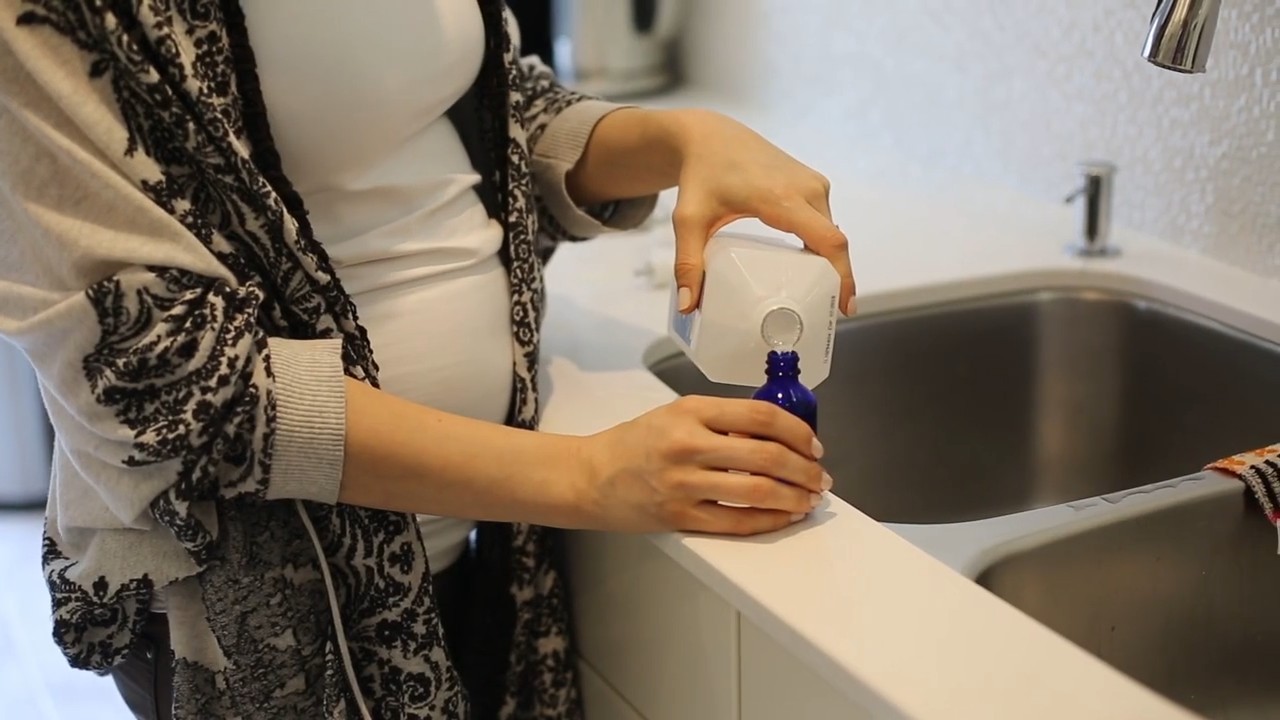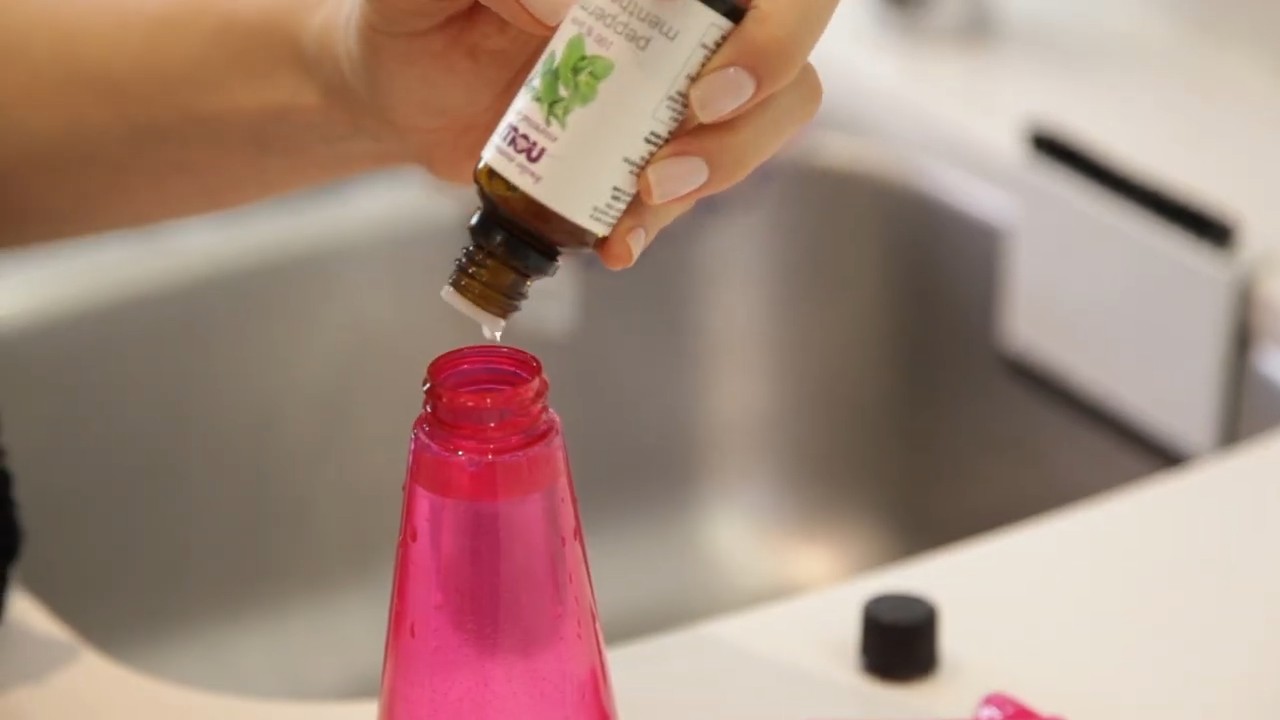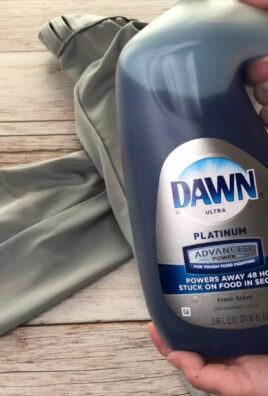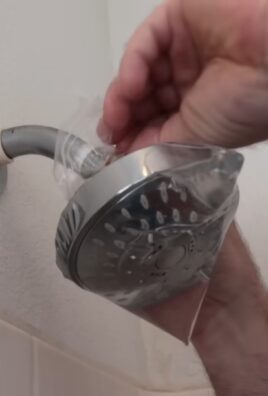Rubbing alcohol home uses are far more extensive than just disinfecting cuts! I’m constantly amazed by the versatility of this humble household staple. From tackling stubborn stains to keeping my plants healthy, rubbing alcohol has become my go-to secret weapon for a sparkling clean and thriving home.
Did you know that the use of alcohol for cleaning and disinfecting dates back centuries? Ancient civilizations recognized its potent antibacterial properties, and today, we’re rediscovering its power in a whole new light. But forget the harsh chemicals and expensive cleaners – I’m here to show you how to harness the magic of rubbing alcohol for a range of DIY projects that will save you time, money, and a whole lot of hassle.
In today’s world, we’re all looking for ways to simplify our lives and reduce our reliance on harsh chemicals. That’s where these DIY tricks come in! Whether you’re battling mildew in your bathroom, trying to revive tired houseplants, or simply looking for a natural way to freshen up your home, rubbing alcohol home uses offer a safe, effective, and budget-friendly solution. So, grab your bottle of rubbing alcohol, and let’s dive into some amazing DIY hacks that will transform your home!

Unlocking the Magic of Rubbing Alcohol: More Than Just a First-Aid Staple!
Hey there, fellow DIY enthusiasts! I’m about to let you in on a little secret: rubbing alcohol (isopropyl alcohol) is a powerhouse of a product that goes way beyond cleaning cuts and scrapes. Seriously, this stuff is like the Swiss Army knife of household solutions. I’ve been experimenting with it for years, and I’m constantly amazed by its versatility. So, buckle up, because I’m going to share some of my favorite DIY hacks using rubbing alcohol. Get ready to be amazed!
Cleaning and Disinfecting Like a Pro
Rubbing alcohol is a fantastic disinfectant, and I use it all the time to keep my home sparkling clean.
* Why it works: Rubbing alcohol effectively kills bacteria, viruses, and fungi, making it perfect for sanitizing surfaces.
* Safety First: Always use rubbing alcohol in a well-ventilated area. Avoid contact with your eyes and skin. And never, ever mix it with bleach – that creates toxic fumes!
Cleaning Electronics
My phone and laptop are constantly covered in fingerprints and who-knows-what-else. Rubbing alcohol to the rescue!
1. Gather your supplies: You’ll need rubbing alcohol (70% is ideal), a microfiber cloth, and cotton swabs.
2. Power down: Turn off and unplug your electronic device. This is crucial to prevent damage.
3. Dampen the cloth: Lightly dampen the microfiber cloth with rubbing alcohol. It should not be dripping wet!
4. Wipe down surfaces: Gently wipe down the screen, keyboard, and casing of your device.
5. Reach tight spots: Use a cotton swab dipped in rubbing alcohol to clean around buttons, ports, and other hard-to-reach areas.
6. Air dry: Allow the device to air dry completely before turning it back on.
Sanitizing Surfaces
I use rubbing alcohol to sanitize everything from doorknobs to countertops.
1. Choose your concentration: A 70% solution of rubbing alcohol is generally recommended for disinfecting.
2. Spray or wipe: You can either spray the surface with rubbing alcohol or apply it with a clean cloth.
3. Let it sit: Allow the rubbing alcohol to sit on the surface for at least 30 seconds to ensure proper disinfection.
4. Wipe clean (optional): You can wipe the surface dry with a clean cloth, or let it air dry.
Cleaning Mirrors and Windows
Say goodbye to streaks! Rubbing alcohol makes mirrors and windows shine.
1. Mix your solution: Combine equal parts rubbing alcohol and water in a spray bottle.
2. Spray the surface: Lightly spray the mirror or window with the solution.
3. Wipe clean: Wipe the surface with a clean microfiber cloth. You’ll be amazed at how streak-free it is!
Removing Stubborn Stains
Rubbing alcohol is a stain-fighting champion! I’ve used it to remove everything from ink to permanent marker.
* Important Note: Always test rubbing alcohol on an inconspicuous area of the fabric first to ensure it doesn’t damage the material.
Removing Ink Stains
Ink stains are the bane of my existence, but rubbing alcohol usually does the trick.
1. Blot the stain: Blot the ink stain with a clean cloth to remove as much excess ink as possible.
2. Apply rubbing alcohol: Saturate a cotton ball with rubbing alcohol and gently dab the stain.
3. Blot again: Blot the stain with a clean cloth to absorb the ink and rubbing alcohol.
4. Repeat: Repeat steps 2 and 3 until the stain is gone.
5. Launder: Launder the garment as usual.
Removing Permanent Marker
Yes, you read that right! Rubbing alcohol can even remove permanent marker from some surfaces.
1. Test first: Test the rubbing alcohol on an inconspicuous area of the surface to make sure it doesn’t damage it.
2. Apply rubbing alcohol: Apply rubbing alcohol to a cotton ball or cloth and gently rub the marker stain.
3. Wipe clean: Wipe the surface with a clean cloth.
4. Repeat: Repeat steps 2 and 3 until the stain is gone.
Removing Sticky Residue
That sticky residue left behind by stickers and tape? Rubbing alcohol dissolves it like magic!
1. Apply rubbing alcohol: Saturate the sticky residue with rubbing alcohol.
2. Let it sit: Let the rubbing alcohol sit for a few minutes to soften the adhesive.
3. Wipe away: Wipe away the residue with a clean cloth.
Beauty and Personal Care Hacks
Believe it or not, rubbing alcohol has some surprising beauty and personal care applications.
* Disclaimer: Always exercise caution when using rubbing alcohol on your skin. If you have sensitive skin, test it on a small area first.
Cleaning Makeup Brushes
Dirty makeup brushes can harbor bacteria and lead to breakouts. Rubbing alcohol keeps them clean and fresh.
1. Gather your supplies: You’ll need rubbing alcohol, a small bowl, and paper towels.
2. Pour rubbing alcohol: Pour a small amount of rubbing alcohol into the bowl.
3. Dip the brushes: Dip the bristles of your makeup brushes into the rubbing alcohol.
4. Swirl and clean: Swirl the brushes around in the rubbing alcohol to remove makeup residue.
5. Dry the brushes: Wipe the brushes on a paper towel to remove excess rubbing alcohol and allow them to air dry completely.
DIY Hand Sanitizer
In a pinch, you can make your own hand sanitizer with rubbing alcohol.
1. Gather your ingredients: You’ll need rubbing alcohol (at least 70% concentration), aloe vera gel, and an essential oil (optional).
2. Mix the ingredients: Combine 2 parts rubbing alcohol with 1 part aloe vera gel.
3. Add essential oil (optional): Add a few drops of your favorite essential oil for fragrance.
4. Mix well: Mix all the ingredients together thoroughly.
5. Store in a bottle: Pour the mixture into a clean, empty bottle.
Treating Ingrown Hairs
Rubbing alcohol can help disinfect and soothe ingrown hairs.
1. Clean the area: Clean the affected area with soap and water.
2. Apply rubbing alcohol: Apply rubbing alcohol to a cotton ball and gently dab the ingrown hair.
3. Repeat: Repeat this process several times a day until the ingrown hair is resolved.
Other Clever Uses
The possibilities are endless! Here are a few more of my favorite rubbing alcohol hacks.
Removing Ice from Car Windows
Icy car windows are a winter nightmare. Rubbing alcohol can melt the ice quickly.
1. Mix your solution: Combine 1 part rubbing alcohol with 2 parts water in a spray bottle.
2. Spray the windows: Spray the icy windows with the solution.
3. Watch the ice melt: The ice should start to melt almost immediately.
4. Wipe clean: Wipe the windows clean with a cloth or scraper.
Freshening Up Shoes
Smelly shoes? Rubbing alcohol can help eliminate odors.
1. Spray the inside of the shoes: Spray the inside of the shoes with rubbing alcohol.
2. Let them air dry: Allow the shoes to air dry completely.
Extending the Life of Razor Blades
Soaking your razor blades in rubbing alcohol after each use can help prevent rust and extend their lifespan.
1. Rinse the razor: Rinse the razor blade with water after each use.
2. Soak in rubbing alcohol: Soak the razor blade in rubbing alcohol for a few minutes.
3. Dry the razor: Allow the razor blade to air dry completely.
Getting Rid of Fruit Flies
Fruit flies driving you crazy? Rubbing alcohol can help eliminate them.
1. Spray the air: Spray the air around the fruit flies with rubbing alcohol.
2. Repeat as needed: Repeat this process as needed to keep the fruit flies at bay.
So there you have it – a whole arsenal of DIY hacks using rubbing alcohol! I hope you found these tips helpful and that you’re inspired to experiment with this amazing product yourself. Remember to always use caution and follow safety guidelines. Happy DIY-ing!

Conclusion
So, there you have it! Unlocking the incredible potential of rubbing alcohol for a multitude of home uses is not just a cost-effective solution; it’s a game-changer for maintaining a clean, organized, and healthy living space. From banishing stubborn stains to sanitizing surfaces and even tackling pesky pests, rubbing alcohol proves its versatility time and time again.
Why is this DIY approach a must-try? Because it empowers you to take control of your cleaning routine, reduce your reliance on harsh chemicals, and save money in the process. Commercial cleaning products often come with a hefty price tag and a list of ingredients that can be difficult to decipher. With rubbing alcohol, you know exactly what you’re using, and you can tailor its application to suit your specific needs.
But the benefits don’t stop there. Think about the environmental impact of constantly purchasing disposable cleaning wipes or spray bottles. By embracing rubbing alcohol and reusable cloths or spray bottles, you’re actively contributing to a more sustainable lifestyle.
Looking for variations? Consider infusing your rubbing alcohol with essential oils for a pleasant scent and added antibacterial properties. A few drops of lavender, tea tree, or eucalyptus oil can transform your cleaning routine into an aromatherapy experience. You can also experiment with different concentrations of rubbing alcohol depending on the task at hand. For delicate surfaces, a diluted solution may be best, while tougher stains may require a higher concentration.
Don’t be afraid to get creative and explore the many possibilities that rubbing alcohol offers. Remember to always test a small, inconspicuous area first to ensure compatibility, especially when dealing with delicate fabrics or surfaces.
We wholeheartedly encourage you to try these DIY rubbing alcohol tricks and discover the transformative power of this humble household staple. We’re confident that you’ll be amazed by the results.
And most importantly, we want to hear from you! Share your experiences, tips, and tricks in the comments below. What are your favorite ways to use rubbing alcohol around the house? Have you discovered any unexpected applications? Let’s build a community of resourceful DIYers and unlock even more potential for this amazing product. Your insights could inspire others to embrace the power of rubbing alcohol and revolutionize their own cleaning routines. So, go ahead, give it a try, and let us know what you think!
Frequently Asked Questions (FAQs)
Is rubbing alcohol safe to use around children and pets?
While rubbing alcohol is a versatile cleaning agent, it’s crucial to exercise caution when using it around children and pets. Rubbing alcohol is toxic if ingested, so it’s essential to store it out of reach of children and pets. When using it for cleaning, ensure the area is well-ventilated to prevent inhalation of fumes. Allow surfaces to dry completely before allowing children or pets to come into contact with them. Consider using diluted solutions for added safety. If you suspect that a child or pet has ingested rubbing alcohol, seek immediate medical or veterinary attention. Always prioritize safety when using any cleaning product, and take necessary precautions to protect your loved ones.
What is the best concentration of rubbing alcohol to use for cleaning?
The ideal concentration of rubbing alcohol for cleaning depends on the specific task. For general cleaning and disinfecting, a 70% isopropyl alcohol solution is generally recommended. This concentration is effective at killing most germs and bacteria while also evaporating quickly, minimizing the risk of damage to surfaces. For more stubborn stains or tougher cleaning tasks, you can use a higher concentration, such as 91% isopropyl alcohol. However, it’s important to note that higher concentrations may be more likely to damage certain surfaces, so it’s always best to test a small, inconspicuous area first. Diluting rubbing alcohol with water can also be a good option for delicate surfaces or when you want to reduce the intensity of the fumes.
Can I use rubbing alcohol to clean electronics?
Yes, rubbing alcohol can be used to clean electronics, but it’s essential to do so with caution and follow specific guidelines. Always use isopropyl alcohol with a concentration of 90% or higher, as it contains less water and evaporates more quickly, reducing the risk of damage to sensitive electronic components. Before cleaning any electronic device, turn it off and unplug it from the power source. Apply a small amount of rubbing alcohol to a lint-free cloth and gently wipe the surface of the device. Avoid spraying rubbing alcohol directly onto the device, as this could cause damage. For hard-to-reach areas, such as keyboards or charging ports, use a cotton swab dipped in rubbing alcohol. Allow the device to dry completely before turning it back on.
Will rubbing alcohol damage my furniture or other surfaces?
Rubbing alcohol can potentially damage certain types of furniture and surfaces, so it’s crucial to exercise caution and test a small, inconspicuous area before applying it to a larger area. Surfaces that are particularly susceptible to damage from rubbing alcohol include painted surfaces, varnished wood, and certain types of plastic. When cleaning these surfaces, it’s best to use a diluted solution of rubbing alcohol and apply it sparingly. Avoid prolonged contact with the surface, and wipe it dry immediately after cleaning. For delicate surfaces, consider using alternative cleaning methods that are less likely to cause damage.
Can rubbing alcohol be used as a hand sanitizer?
Yes, rubbing alcohol can be used as a hand sanitizer, but it’s important to use the correct concentration and follow proper guidelines. The Centers for Disease Control and Prevention (CDC) recommends using hand sanitizers with an alcohol concentration of at least 60% to effectively kill most germs and bacteria. When using rubbing alcohol as a hand sanitizer, apply a small amount to your hands and rub them together until they are dry. Ensure that you cover all surfaces of your hands, including your palms, backs of hands, and between your fingers. While rubbing alcohol can be an effective hand sanitizer, it’s important to note that it can also dry out your skin. Consider using a moisturizer after using rubbing alcohol to prevent dryness and irritation.
How should I store rubbing alcohol safely?
Storing rubbing alcohol safely is crucial to prevent accidents and ensure its effectiveness. Always store rubbing alcohol in a tightly sealed container in a cool, dry, and well-ventilated area. Keep it out of reach of children and pets, as it is toxic if ingested. Avoid storing rubbing alcohol near heat sources, open flames, or other flammable materials, as it is highly flammable. It’s also important to label the container clearly to prevent confusion with other liquids. By following these storage guidelines, you can ensure the safety and longevity of your rubbing alcohol.
What are some other unexpected uses for rubbing alcohol?
Beyond cleaning and disinfecting, rubbing alcohol has a surprising number of other unexpected uses. It can be used to remove permanent marker stains from various surfaces, including clothing, furniture, and walls. It can also be used to dissolve sticky residue from labels and stickers. Rubbing alcohol can even be used to create a homemade ice pack by mixing it with water in a resealable bag and freezing it. Additionally, it can be used to soothe insect bites and relieve muscle soreness. The versatility of rubbing alcohol makes it a valuable addition to any household.




Leave a Comment